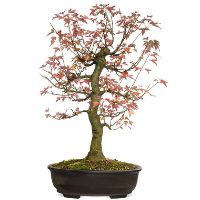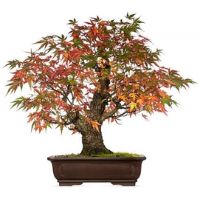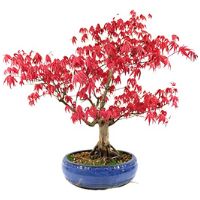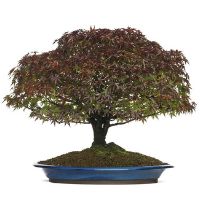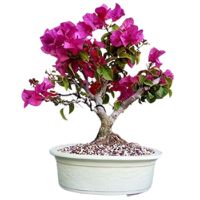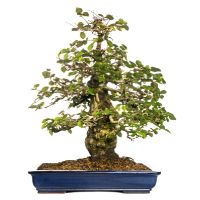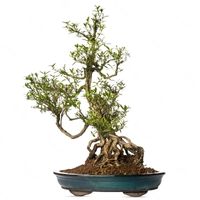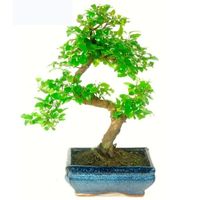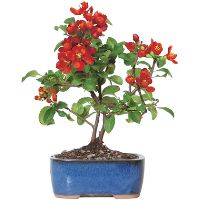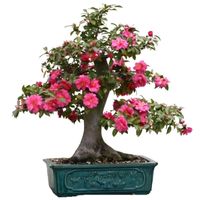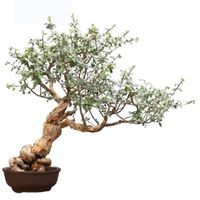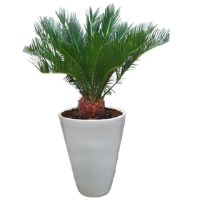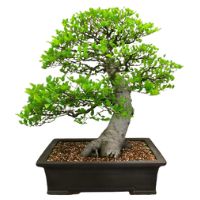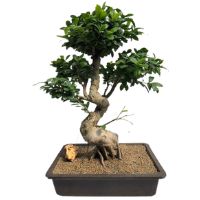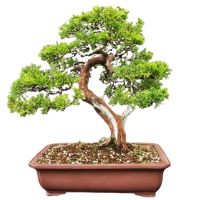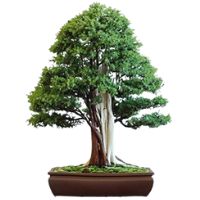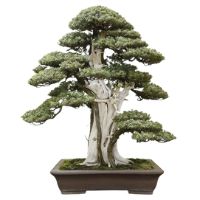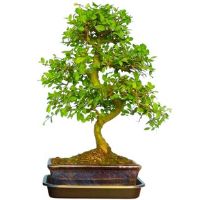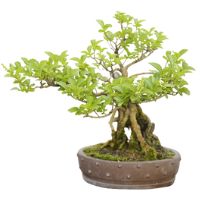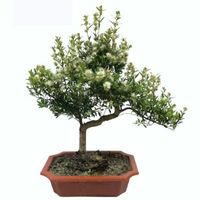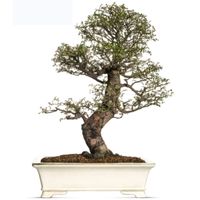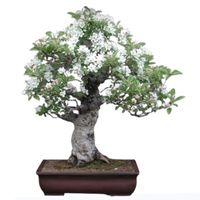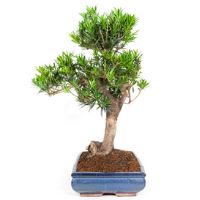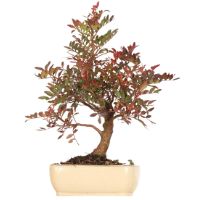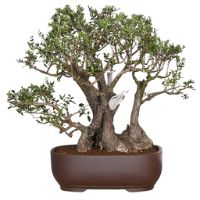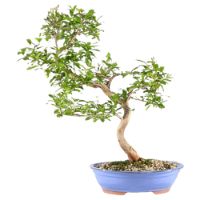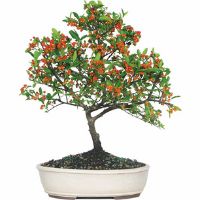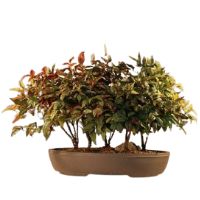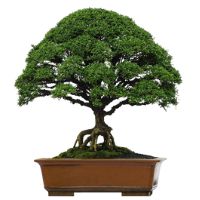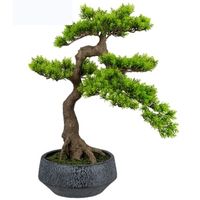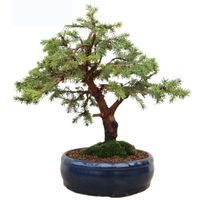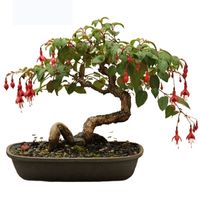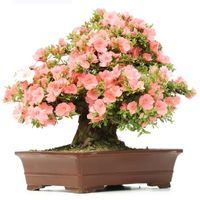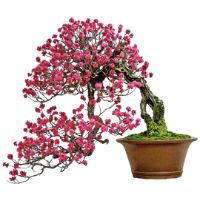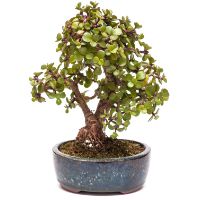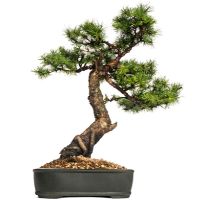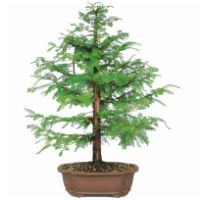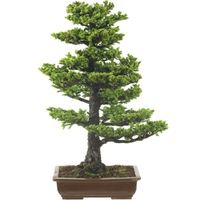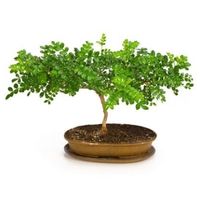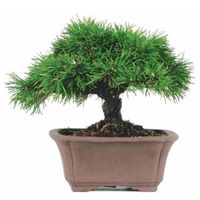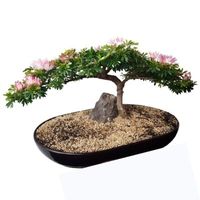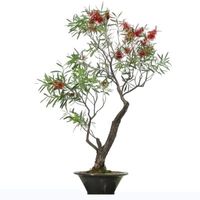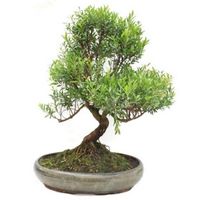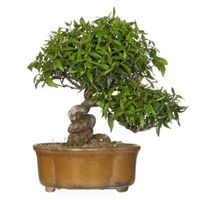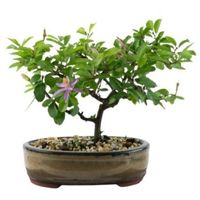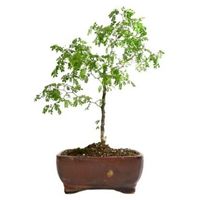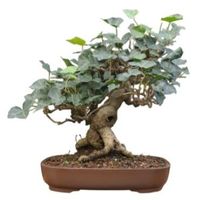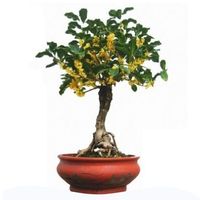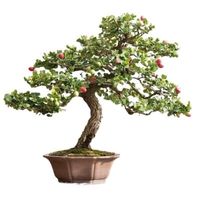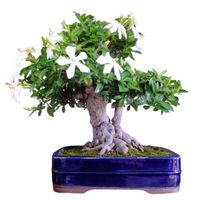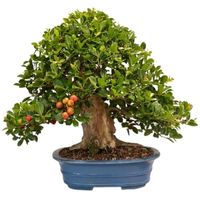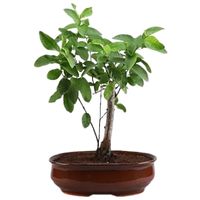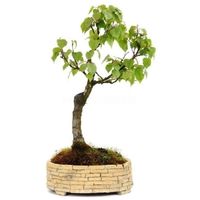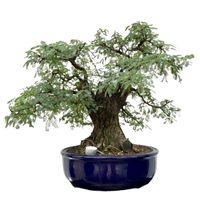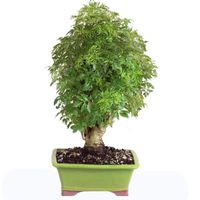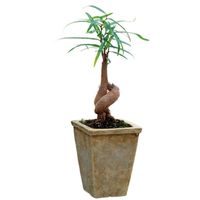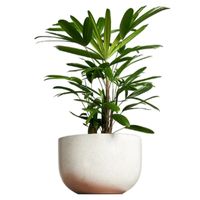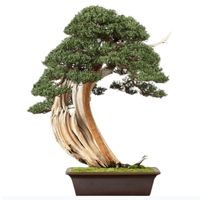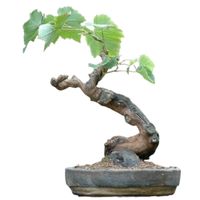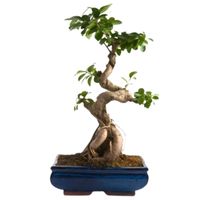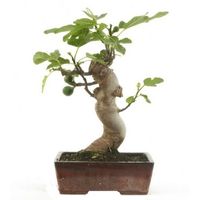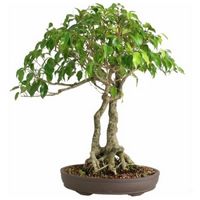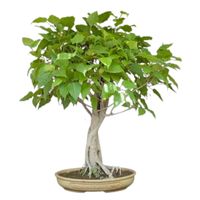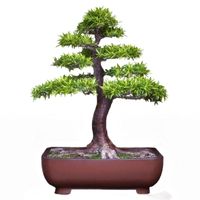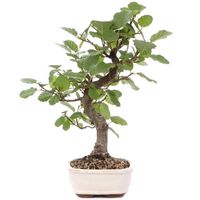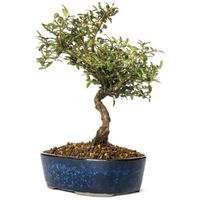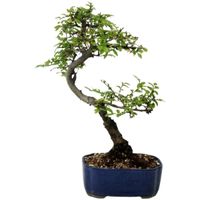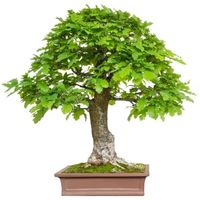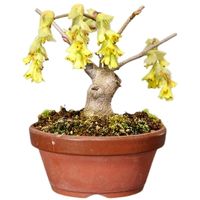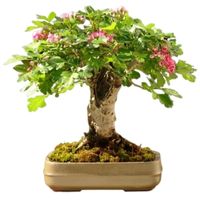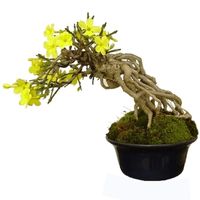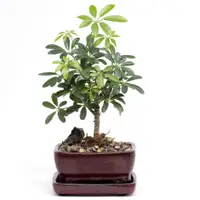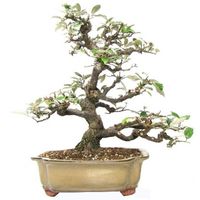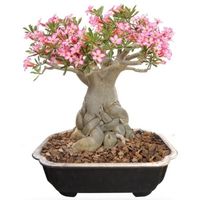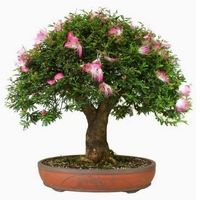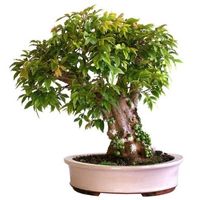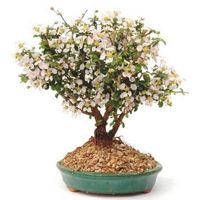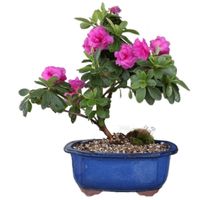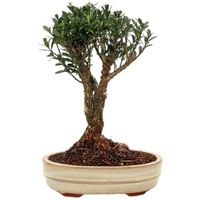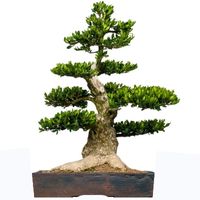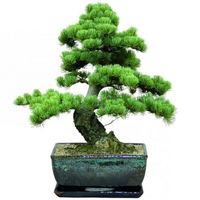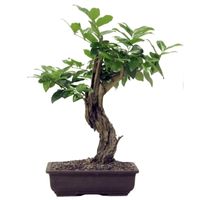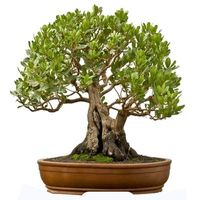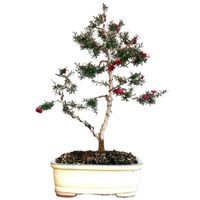In this types of bonsai trees guide, we have catalogued different types of bonsai tree species used for making bonsai.
A number of tips are given in this guide about how to grow and care for a bonsai tree, as well as recommendations on the best bonsai styles and sizes for each species.
We intend to include all the relevant information concerning suitable location, pruning and pinching, wiring, watering, repotting and feeding practices in the care guide.
In addition, we have provided advice about bonsai pests and diseases management and what you should be on the lookout for when purchasing bonsai. Also refer to best practices to keep your bonsai pest free.
We have also made a detailed guide on bonsai tools and best practices to keep the tools clean and last longer.
You can check out which bonsai container to choose for your bonsai in case you looking for more container ideas. And, bonsai recipes for making your own bonsai soil for beginners.
How many types of bonsai trees are there?
Types of bonsai trees depend on various factors such as: tree species, tree type (conifers/broadleaved or deciduous/evergreen), preferred location (indoor/outdoor), bonsai style, bonsai size (small to extra-large) or even whether the tree is flowering or fruiting.
For instance, cedar, juniper, pine are considered as coniferous types of bonsai trees. On the other hand, maple, beech, Acer are considered as broadleaf types of bonsai trees.
Furthermore, juniper, firethrone, cork oak are evergreen types of bonsai trees, whereas hornbeam, birch, common oak are deciduous types of bonsai trees.
Additionally, trees like Fukien tea, Pomegranate, Chinese elm are types of bonsai trees that can be grown as indoor bonsai tree. On the contrary, trees like weeping willow, yew, hornbeam are types of bonsai trees that can be grown as outdoor bonsai trees. (There are some bonsai species that can be grown indoors and outdoors such as Chinese elm bonsai)
Like mentioned earlier, bonsai trees are also grown because of their showy flowers and fruit. For example, Satsuki azalea, Winter jasmine, Camellia are grown as flowering bonsai trees. And, trees like crabapple, citrus and Japanese winterberry are generally grown as fruiting bonsai trees.
Can any tree be used for bonsai?
Almost any tree can be made into a bonsai. Bonsai is nothing but a miniaturized version of how the tree looks in the wild. As long as you are able to mimic the tree’s natural growth habit and keep the tree small in a pot, it will be considered a bonsai.
However, remember that making a bonsai depends on your local climate also. Hence, for a start if you plan to make an outdoor bonsai, start with a tree variety that suits your climate. Any tree that is not local to your climate will need climate control at some level (eg: placing it in greehouse, wind circulation using fans or changing the location of the bonsai from time to time).
On the other hand, you can artificially regulate the climate in case you are growing an indoor bonsai. For example, if you live in a cold climate, you can keep a warm climate tree indoors.
Is bonsai a good hobby?
Bonsai is a very good hobby. Growing and styling your bonsai is not only relaxing but also stimulates your mind. The feeling of nurturing a plant and watching it grow in your desired shape will definitely give you a sense of achievement and pride. The joy you get looking at a finished bonsai is something which can not be explained in words. That joy is amplified even more when the bonsai is created by you. It is a highly rewarding hobby if you have the patience for it.
This hobby also connects you with like minded people by various bonsai communities. In these communities you can share your beautiful creations (and fish for compliments), share your ideas and ask questions.
How do I know if bonsai is the right hobby for me?
The first thing you should do is read more about the art of bonsai. It is not just a simple hobby. Like many other hobbies, bonsai culture will consume a considerable amount of time.
Do not buy any bonsai yet. Join a few bonsai communities or Facebook groups and read their posts and experiences. If possible, visit any exhibitions, workshops or gardens of your local bonsai groups. I’m confident that they will be more than happy to share their knowledge and advice. If you are lucky, they might even end up sharing some starting material or cuttings so that you can get a start. Practice on it and keep very small goals. See whether you like taking care of a tree and whether you are able to visualize and plan the shape of your tree. Also ask yourself if you are ready to make a commitment of a few years to grow the starting material into a bonsai.
Before making a purchase of your first bonsai material, be absolutely sure about the tree species and things to look for in a bonsai specimen. Few bonsai sellers might take advantage of your eagerness and lack of knowledge. Hence, be very careful or else you will end up with something that will be a waste of your valuable time and money.
How do you start a Bonsai tree from the beginning?
- Take a walk through your backyard and try to uproot some young trees and bushes and plant them in pots so that they can grow.
- Acquire a cutting or a small tree from the wild.
- A landscape garden nursery is a great place to purchase overgrown softwood and hardwood plants/trees. The best trees to choose are those with curved trunks and small leaves.
- You can even buy a mature bonsai tree.
Why are bonsai trees so special?
Bonsai trees are special for several reasons, including:
- Aesthetic Appeal: Bonsai trees are prized for their beauty and aesthetic appeal. These miniature trees can be shaped and styled in many different ways to create unique and visually stunning creations.
- Cultural Significance: Bonsai trees have a long history and cultural significance in many Asian countries, particularly Japan, where they are considered a symbol of harmony, balance, and peace.
- Patience and Skill: Growing a bonsai tree requires patience, skill, and dedication. It can take years or even decades to create a fully mature and beautiful bonsai tree.
- Connection to Nature: Bonsai trees allow people to connect with nature in a unique and meaningful way. By caring for these living works of art, people can gain a deeper appreciation for the natural world and the processes that sustain life.
- Meditation and Mindfulness: Many people find that caring for bonsai trees can be a meditative and calming practice that helps to reduce stress and promote mindfulness.
Overall, bonsai trees are special because they are a beautiful and meaningful way to connect with nature, express creativity, and cultivate patience and mindfulness.
Where do bonsai trees originate from?
Bonsai trees originated in China over a thousand years ago (known as ‘pun-sai‘ in China), but the art of bonsai was refined and perfected in Japan. The practice of growing miniature trees in containers was first developed in China for the purpose of decorating homes and gardens. The earliest known record of bonsai cultivation dates back to the Tang Dynasty (618-907 AD).
In Japan, the art of bonsai was refined and elevated to a new level. The Japanese developed a unique approach to bonsai cultivation, which emphasized the use of specialized tools and techniques for shaping and styling the trees. Bonsai became a highly respected art form in Japan, and it was practiced by people of all social classes.
Today, bonsai is a popular hobby and art form around the world. Bonsai trees can be found in homes, gardens, and public spaces, and there are many clubs and organizations dedicated to the cultivation and appreciation of these miniature trees.
How to identify type of bonsai tree?
Identifying the type of bonsai tree can be a bit challenging, especially for beginners. However, here are some steps you can follow to help you identify the type of bonsai tree:
- Observe the leaves: Look at the shape, size, and color of the leaves. Bonsai trees can have different leaf shapes, such as needle-like leaves for conifers, oval-shaped leaves for broad-leaved deciduous trees, and small, glossy leaves for tropical trees.
- Look at the bark: The texture and color of the bark can also provide clues to the type of bonsai tree. For example, the bark of a pine bonsai tree will be rough and scaly, while the bark of a maple bonsai tree will be smooth and grayish-brown.
- Check the flowers or fruits: If your bonsai tree is flowering or producing fruit, this can also help you identify the type. For example, an azalea bonsai tree will have pink or white flowers in the spring, while a crabapple bonsai tree will have small, red or yellow apples in the fall.
- Consult a guidebook or expert: If you are still unsure about the type of bonsai tree, you can consult a guidebook or an expert in bonsai cultivation. There are many excellent books and online resources available that can help you identify your bonsai tree, and many nurseries or bonsai clubs have experts who can provide guidance and advice. The guidelines – “types of bonsai trees” on this page will help you immensely in identification of your bonsai tree. (scroll up).
Identifying the type of bonsai tree can be a fun and rewarding process, and it can deepen your appreciation for these beautiful and unique miniature trees.
Can any type of tree be a bonsai?
Technically, any type of tree can be used for bonsai, as bonsai is the art of growing and training miniature trees in containers. However, some tree species are better suited for bonsai than others, as they have characteristics that make them easier to train and maintain in small sizes.
Trees with small leaves and branches, slow growth rates, and a natural tendency to form a pleasing shape are generally preferred for bonsai. Some examples of popular bonsai species include Japanese maple, Chinese elm, juniper, pine, and ficus.
It’s important to note that different tree species have different requirements for soil, water, light, and temperature, so it’s important to choose a tree that is appropriate for your climate and growing conditions. Additionally, certain species may require more advanced techniques or specialized tools to maintain as bonsai.
Difference between bonsai and normal trees?
The main difference between bonsai and normal trees is their size and appearance. Bonsai are miniature trees that are grown and trained to stay small, while normal trees are grown to their natural size and shape.
Bonsai trees are grown in small containers and are pruned and trained through a variety of techniques to maintain their small size and achieve a desired shape. They are often trained to have an aged appearance, with gnarled trunks and twisted branches, to create the impression of a full-sized tree that has been shaped by nature over time.
Normal trees, on the other hand, are grown in the ground or in larger containers and are allowed to grow to their natural size and shape. They are not usually pruned or trained in the same way as bonsai trees, as they are allowed to grow and develop as nature intended.
Another difference is that bonsai trees require more care and attention than normal trees. Bonsai trees need regular pruning, watering, fertilizing, and repotting to keep them healthy and in the desired shape. Normal trees, on the other hand, require less maintenance, although they may need occasional pruning or other care to keep them healthy and looking their best.
Why bonsai trees are so small?
Bonsai trees are intentionally grown and trained to be small for artistic purposes, rather than being limited by their natural growth habits. The goal of bonsai is to create a miniature representation of a full-sized tree that appears old and weathered, while still maintaining the essential characteristics of the species.
To achieve this effect, bonsai growers use a combination of techniques such as pruning, wiring, and root reduction to limit the size and shape of the tree. By carefully controlling the growth of the tree and shaping it over time, bonsai artists are able to create a small, aesthetically pleasing tree that looks like a natural tree in miniature.
The small size of bonsai trees also makes them more suitable for display indoors or in small outdoor spaces, such as balconies or courtyards. In addition, the small size of bonsai trees allows for greater control over their growing conditions, as they can be easily moved and protected from extreme temperatures or weather events.
It’s important to note that while bonsai trees are small, they still require careful attention and maintenance to keep them healthy and looking their best. This includes regular watering, fertilizing, pruning, and repotting to ensure that the tree remains healthy and in the desired shape.
What kind of bonsai tree should i get?
Choosing the right bonsai tree depends on several factors, including your personal preferences, the level of care you are willing to provide, and your growing conditions. Here are some general tips to help you choose the right bonsai tree:
- Consider the species: Choose a bonsai species that is well-suited to your growing conditions and the level of care you can provide. Some species are more tolerant of indoor growing conditions, while others require more light and outdoor growing conditions.
- Determine the size: Decide on the size of bonsai tree you want to grow. Smaller trees are generally easier to maintain and are better suited for indoor growing conditions, while larger trees may require more space and outdoor growing conditions.
- Think about the style: Consider the style of bonsai tree you want to grow, such as formal upright, informal upright, cascade, or semi-cascade. Each style requires different techniques for training and shaping the tree.
- Research the care requirements: Before choosing a bonsai tree, research the care requirements for the species you are interested in. Bonsai trees require regular watering, pruning, fertilizing, and repotting to keep them healthy, so make sure you are prepared to provide the necessary care.
- Purchase from a reputable source: Purchase your bonsai tree from a reputable source, such as a local nursery or bonsai specialist. This will ensure that you are getting a healthy tree that is well-suited to your growing conditions.
Purchase from a reputable source: Purchase your bonsai tree from a reputable source, such as a local nursery or bonsai specialist. This will ensure that you are getting a healthy tree that is well-suited to your growing conditions.
What is the best type of bonsai tree?
There is no single “best” type of bonsai tree, as the ideal species will depend on several factors such as your personal preferences, level of experience, and growing conditions. However, here are some popular species that are well-suited to bonsai cultivation:
- Japanese Maple (Acer palmatum): Known for its striking foliage and elegant shape, Japanese maple is a popular choice for bonsai enthusiasts. It requires partial shade and regular watering to thrive. Also, some other maple species you can use for growing a bonsai are Hedge maple, Seigen maple, Trident maple, Amur maple, Japanese maple, Japanese red maple, Kiyohime maple.
- Chinese Elm (Ulmus parvifolia): A hardy and easy-to-grow species, Chinese elm has small leaves and a graceful shape that make it ideal for bonsai cultivation. It can tolerate a wide range of growing conditions and requires moderate watering and pruning.
- Juniper (Juniperus spp.): With its rugged, gnarled trunk and small, needle-like foliage, juniper is a classic bonsai species. It prefers full sun and well-draining soil, and requires regular pruning and pinching to maintain its shape. Some juniper species that can be grown as a bonsai are: Chinese Juniper, Sargent Juniper, Common Juniper, Needle Juniper, Meyers Juniper, California juniper.
- Pine (Pinus spp.): Pines are well-suited to bonsai cultivation due to their evergreen foliage and striking appearance. They require full sun and well-draining soil, and may require occasional wire training to shape the trunk and branches. Some Pine species that make a delightful bonsai are: Japanese white pine, Japanese black pine, Scots pine, Mugo pine, Aleppo pine, Australian Pine.
- Ficus (Ficus spp.): Ficus trees have small leaves, delicate branches, and a wide variety of shapes, making them a popular choice for bonsai. They prefer bright, indirect light and regular watering, and may require regular pruning to maintain their shape. Some Fig species that make a great bonsai are: Common fig, Weeping fig, Boxwood fig, Natal fig, Sacred fig
Ultimately, the best type of bonsai tree for you will depend on your personal preferences and growing conditions. It’s important to research each species thoroughly before choosing one, and to provide regular care and maintenance to keep your bonsai tree healthy and beautiful.




